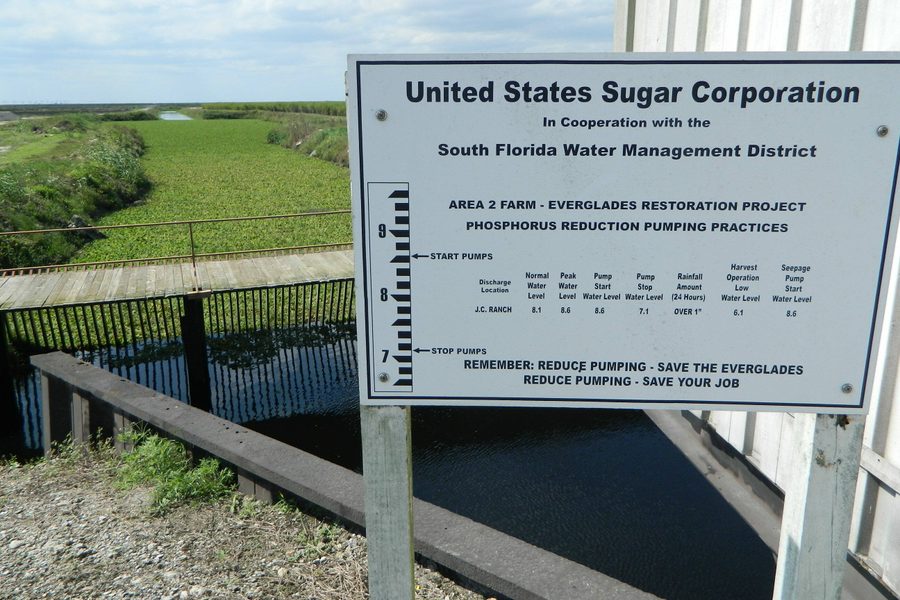
The lede on a story by the American Enterprise Institute (AEI) attacking import limits and other government protections for the U.S. sugar industry was an attention-grabber: “That Valentine’s Day hand on your back pocket billfold is not your sweetheart’s, it’s the sugar lobby’s.”
There are plenty of reasons for less-than-sweet feelings about the sugar industry, from the big sugar cane producers that have decimated large swaths of the Everglades to American Crystal Sugar Company, the sugar beet producer which has locked out 1,300 workers at its North Dakota plant this winter. On February 22, those workers are joining other locked out workers for a 1,000-mile-plus “Journey for Justice” from Fargo, N.D. to the site of a tire factory that’s locked out workers in Findlay, Ohio. (In These Times staff writer Mike Elk will be along for the ride.)
But the AEI doesn’t usually ally itself with labor or environmental causes, so I was surprised to see the conservative, pro-business think tank attacking the powerful sugar industry with a recent study saying import limits and other federal protections for sugar beet and sugar cane farmers are costing jobs and hurting consumers. AEI’s position does fit with its larger politics, once one considers that artificially high domestic sugar prices increase costs significantly (or so they say) for other parts of the food industry. AEI authors Michael Wohlgenant and Vincent H. Smith explain in their article:
The “no-romance” sugar program has largely been ignored by legislators and groups concerned with tax burdens because there are no direct federal subsidies for the sugar industry. Instead, U.S. sugar policy raises prices indirectly by taxing consumers through the marketplace. A system of import quotas and domestic supply controls works to raise sugar prices for households and food processors to a target level of 23.3 cents per pound of raw sugar when world prices fall below that amount. This system drives up consumer food prices and destroys jobs in the food processing sector because of reduced competitiveness in the global marketplace… In most years, the program also hurts many of the poorest farmers in developing countries by lowering the world price of sugar and reducing their already meager incomes…
In 2006 I wrote in The Washington Post about Chicago-area candy companies closing or moving out of the country; they blamed sugar price supports.
But it’s possible attacking the government sugar program is partly an excuse to justify outsourcing that would have happened anyway. That’s the view expressed by U.S. Sugar spokesperson Judy C. Sanchez, who spoke to a group of reporters I was part of touring sugar cane fields and refineries in Florida in October.
She said U.S. producers make about 1.5 million to two million tons of sugar a year, compared to about 32 million tons in Brazil, which it could “dump on the world market” and in the U.S. if it was allowed to.
“We’re all for global free trade, but other countries have subsidies,” including the European Union and Brazil, Sanchez told the group, part of the Society of Environmental Journalists conference. In contrast to the American Enterprise Institute’s report, she said sugar costs make up such a small part of total food prices that the sugar program doesn’t have a significant impact. She said it might mean a 5 cent price difference in a box of cornflakes or 2 cents on a Hershey bar. She said the price of a bag of sugar in a grocery store “hasn’t gone up in 30 years.”
About half of the sugar we use in the U.S. is produced from sugar cane and half from sugar beets. The cane sugar industry is dominated by a few large powerful companies, including U.S. Sugar and the Fanjul Corp. Opponents often highlight the sugar lobby’s power by pointing out that then-President Bill Clinton reportedly interrupted an infamous encounter with Monica Lewinsky to take a phone call from sugar magnate Alfonso Fanjul.
Based on my October tour and another one in 2008 (thanks to the Scripps Howard Institute on the Environment), it was hard to feel the Florida cane sugar industry was deserving of government protection.
The refineries and growing operations are highly automated, employing fewer workers than in the past, and even when they did have more workers the industry was infamous for hiring low-paid immigrant guest workers who lived in rural slums like Belle Glade, once home to the country’s highest HIV rate. The industry has also been notorious for displacing and polluting huge swaths of the Everglades, leaving the future of the “River of Grass” in doubt and costing millions in restoration funds.
Much Florida state money has been lost in an ill-fated attempt to buy back sugar plantation land. Since the economic crisis hit and the state was unable to complete the deal, the land in question has largely remained sugar plantations.
However Sanchez noted that U.S. Sugar has improved its environmental practices, including using bagasse – the detritus of the cane – as a clean-burning biofuel to power its refinery. And she described the company as an important job-creator, adding that U.S. Sugar has recently invested $600 million in its Florida operations, which employ about 300 people, “so we can compete with foreign producers paying their workers 20 cents a day.”
The AEI study notes that 60 percent of the sugar cane industry is in the hands of a few major producers; while sugar beet farms are much smaller and there are about 4,000 of them nationwide.
American Crystal Sugar, a cooperative of sugar beet growers that also owns sugar beet refineries around the country, is not necessarily representative of the entire sugar beet industry. In many cases sugar beets are grown by true family farmers who struggle to make a living amidst the general hardships of farming and controversies over the use of GMO sugar beets.
During years of controversy raging over the possibility of genetically modified sugar beets being grown on public land in Boulder, Colorado, social justice and sustainability advocates not normally known for allying with big agriculture have spoken out in support of the generations-long, family sugar beet operations.
Sugar has long been intricately linked to tense international relations and geopolitics. Cuba provided a third of the U.S.’s sugar before the revolution and embargo, and Mexican sugar has been prominent in controversy over the North American Free Trade Agreement.
While sugar protections have bolstered mainland U.S. sugar producers, the policies actually wreaked havoc on Hawaii’s economy and environment in the first half of the 1900s, before statehood, when Hawaii was home to many sugar plantations who sold sugar to the U.S. as foreign producers. The industry ultimately meant an influx of immigrant workers, declines in Native Hawaiian well-being, and the clearing and pollution of delicate natural areas – many now standing desolate as the sugar operations have closed.
The American Enterprise Institute used Valentine’s Day as a light-hearted peg to point out how consumers are paying for the price supports enjoyed by the sugar industry. But the fact that sugar is best-known as a largely non-essential, often unhealthy though also highly enjoyable component of food, it is ironic to think of all the labor and social strife and environmental harm the industry has wrought.
If the government ends the current sugar support program, as the AEI is demanding, production may be shifted increasingly to other countries. That might be a good thing for consumers and the environment in the United States. But such a shift would do little or nothing to change the historical legacy of big sugar; or to improve the environmental and labor practices of major sugar companies, wherever they end up.

I hope you found this article important. Before you leave, I want to ask you to consider supporting our work with a donation. In These Times needs readers like you to help sustain our mission. We don’t depend on—or want—corporate advertising or deep-pocketed billionaires to fund our journalism. We’re supported by you, the reader, so we can focus on covering the issues that matter most to the progressive movement without fear or compromise.
Our work isn’t hidden behind a paywall because of people like you who support our journalism. We want to keep it that way. If you value the work we do and the movements we cover, please consider donating to In These Times.
Kari Lydersen is a Chicago-based journalist, author and assistant professor at Northwestern University, where she leads the investigative specialization at the Medill School of Journalism, Media, Integrated Marketing Communications. Her books include Mayor 1%: Rahm Emanuel and the Rise of Chicago’s 99%.







